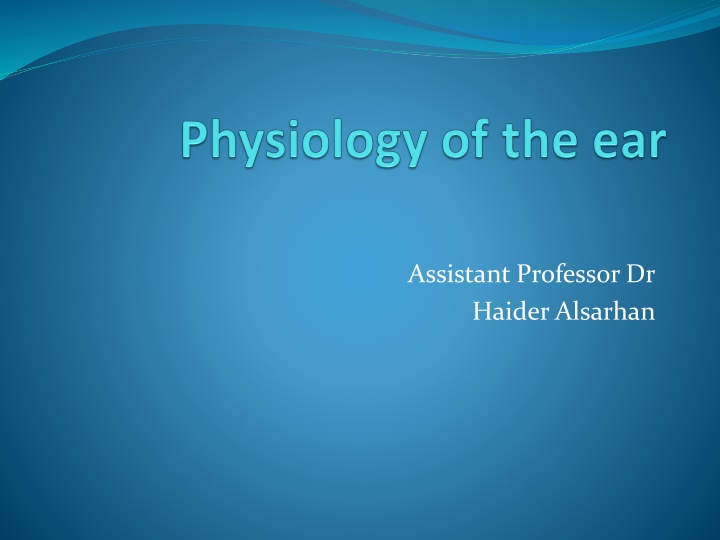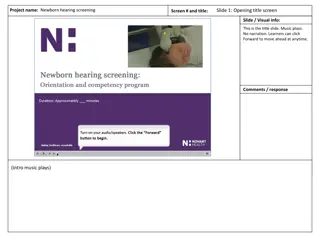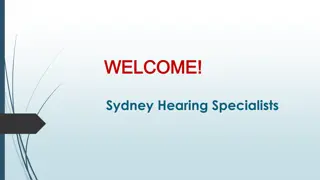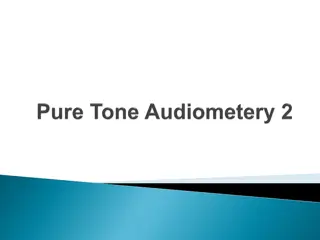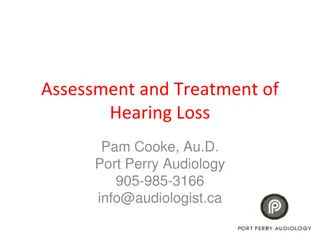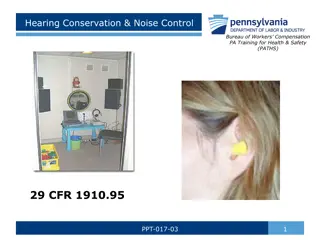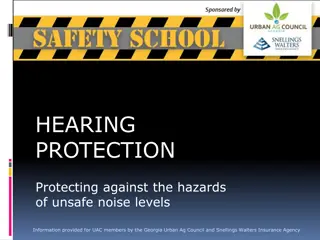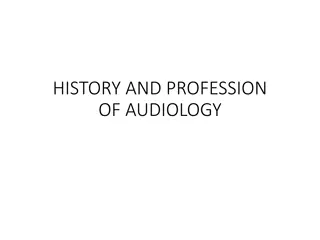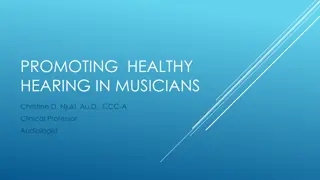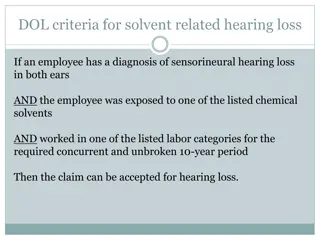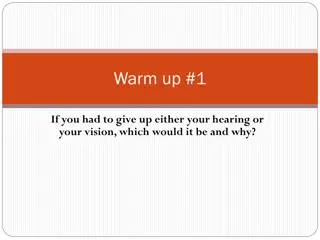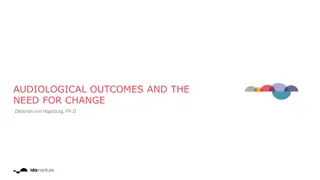Overview of Hearing and Vestibular Systems
The hearing system comprises the peripheral auditory system and central auditory pathways. The middle ear functions in pressure equalization and impedance matching. The inner ear converts physical properties into neural impulses, with frequency representation in different regions. The vestibular system includes peripheral and central components, essential for maintaining balance. Projections of vestibular nuclei have various functions, such as voluntary sensation and eye movements. The balance mechanism integrates input from the vestibular, visual, and proprioceptive systems. Details on the organization and roles of the semicircular canals, utricles, and saccules are provided.
Download Presentation

Please find below an Image/Link to download the presentation.
The content on the website is provided AS IS for your information and personal use only. It may not be sold, licensed, or shared on other websites without obtaining consent from the author.If you encounter any issues during the download, it is possible that the publisher has removed the file from their server.
You are allowed to download the files provided on this website for personal or commercial use, subject to the condition that they are used lawfully. All files are the property of their respective owners.
The content on the website is provided AS IS for your information and personal use only. It may not be sold, licensed, or shared on other websites without obtaining consent from the author.
E N D
Presentation Transcript
Assistant Professor Dr Haider Alsarhan
The Hearing System consists of: 1. Peripheral Auditory System: . External Ear . Middle Ear . Inner Ear . The Cochlear division of the 8thCr. Nerve 2. Central Auditory Pathways:
FUNCTION OF THE MIDDLE EAR: 1. Pressure equalization by Eustachian tube 2. Impedance matching by : A. Lever mechanism B. Area difference of TM & oval window
The inner ear transform the physical properties into electrical neural impulses The high frequencies are represented at the basal turn and low frequencies at the apical portion. The sensory orgenof the cochlear portion of the inner ear is the organ of corte , inside it the sensory cells are the inner hair cells
THE VESTIBULAR SYSTEM: consists of (A) Peripheral Vestibular System: 1. Three Semicircular Canals: lateral, anterior & posterior Receptors: Crista 2. Utricle & Saccule Receptors: Macula 3. Vestibular division of 8thCr Nerve & Scarpa Ganglion (B) Central Vestibular Nuclei: Superior, Medial, Lateral & Inferior
PROJECTIONS OF VESTIBULAR NUCLEI: to 1. Cerebral cortex (Voluntorysensation) 2. Cr. Nerves 3rd, 4th& 6th(Vestibulo-Ocular Reflex)- eye movements 3. Spinal Cord (Vestibulo-Spinal Reflex)- maintenance of body tone 4. Cerebellum- coordination of body movements 5. Autonomic nervous system through 10thCr. nerve (pallor, sweating, nausea & vomiting). - Reticular information & contralateralvestibular nuclei.
THE BALANCE MECHANISM: The Balance of the body is maintained by co- ordination of information from three sensory systems: 1. The Vestibular system 2. The Eyes or Visual system 3. The Proprioceptivesystem: sensation from muscles, joints, tendons and ligaments.
THE SEMICIRCULAR CANALS (SCCs): are stimulated by angular acceleration around an axis. Lateral SCC: Ampulo-petal (utriculo-petal) movement of endolymph causes increase in discharge rates in vestibular nerve while in Anterior & Posterior SCCs, there is decrease in discharge THE UTRICLES & SACCULES: are concerned with identification of head position in relation to gravitational field and linear acceleration & deceleration. IOs app aVOR
Caloric Test (Bithermal CT- COWS)- Cold water 30 worm water 44 New recent methods for vestibular assessment 1 . video head impulse test 2. Video nistagmography 3. Vestibular Evoked Myogenic Potentials
